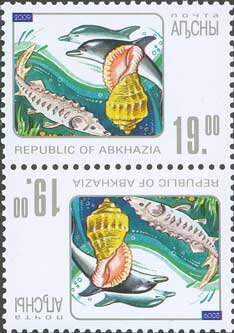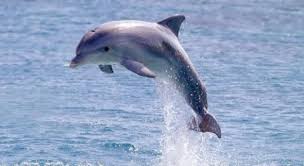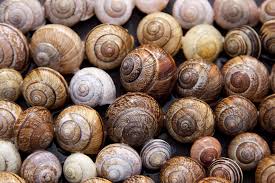Tete-Beche: Fauna of Black sea (Abkhazia 2010)
Fauna of Black sea (Abkhazia 2010)
15 January (Abkhazia ) within release Definitive Issue (10th Issue) goes into circulation Tete-Beche Fauna of Black sea face value 2*19 Russian ruble
| Tete-Beche Fauna of Black sea in catalogues | |
|---|---|
| Michel: | Mi: AB 936ST |
Tete-Beche is vertical format.
Issued in sheet of 16 stamps (4x4).Also in the issue Definitive Issue (10th Issue):
- Tete-Beche - Fauna of Black sea face value 2*19;
- Tete-Beche - Fauna of Black sea face value 2*48.90;
- Tete-Beche - Flag of Abkhazia face value 2*6.60;
- Tete-Beche - Flag of Abkhazia face value 2*64.90;
- Tete-Beche - History of post face value 2*13.80;
- Tete-Beche - History of post face value 2*27.60;
- Tete-Beche - Map of Abkhazia face value 2*1;
- Tete-Beche - Modern and ancient ship face value 2*12.90;
- Tete-Beche - Modern and ancient ship face value 2*25.90;
- Tete-Beche - Modern communication face value 2*19.30;
- Tete-Beche - Modern communication face value 2*53.80;
- Tete-Beche - Modern transport face value 2*16.10;
- Tete-Beche - Modern transport face value 2*41.40;
- Tete-Beche - Nature of Abkhazia face value 2*9;
- Tete-Beche - Nature of Abkhazia face value 2*22.50;
- Tete-Beche - Space projects face value 2*18;
- Tete-Beche - Space projects face value 2*46;
- Tete-Beche - Wine, Grapes and Bee on a Flower face value 2*12.10;
- Tete-Beche - Wine, Grapes and Bee on a Flower face value 2*24.15;
Tete-Beche Fauna of Black sea it reflects the thematic directions:
Animals are multicellular, eukaryotic organisms of the kingdom Animalia (also called Metazoa). All animals are motile, meaning they can move spontaneously and independently, at some point in their lives. Their body plan eventually becomes fixed as they develop, although some undergo a process of metamorphosis later on in their lives. All animals are heterotrophs: they must ingest other organisms or their products for sustenance.
A dolphin is an aquatic mammal within the infraorder Cetacea. Dolphin species belong to the families Delphinidae (the oceanic dolphins), Platanistidae (the Indian river dolphins), Iniidae (the New World river dolphins), Pontoporiidae (the brackish dolphins), and possibly extinct Lipotidae (baiji or Chinese river dolphin). There are 40 extant species named as dolphins.
A fish is any member of a group of animals that consist of all gill-bearing aquatic craniate animals that lack limbs with digits. They form a sister group to the tunicates, together forming the olfactores. Included in this definition are the living hagfish, lampreys, and cartilaginous and bony fish as well as various extinct related groups. Tetrapods emerged within lobe-finned fishes, so cladistically they are fish as well. However, traditionally fish are rendered obsolete or paraphyletic by excluding the tetrapods (i.e., the amphibians, reptiles, birds and mammals which all descended from within the same ancestry). Because in this manner the term "fish" is defined negatively as a paraphyletic group, it is not considered a formal taxonomic grouping in systematic biology. The traditional term pisces (also ichthyes) is considered a typological, but not a phylogenetic classification. The earliest organisms that can be classified as fish were soft-bodied chordates that first appeared during the Cambrian period. Although they lacked a true spine, they possessed notochords which allowed them to be more agile than their invertebrate counterparts. Fish would continue to evolve through the Paleozoic era, diversifying into a wide variety of forms. Many fish of the Paleozoic developed external armor that protected them from predators. The first fish with jaws appeared in the Silurian period, after which many (such as sharks) became formidable marine predators rather than just the prey of arthropods. Most fish are ectothermic ("cold-blooded"), allowing their body temperatures to vary as ambient temperatures change, though some of the large active swimmers like white shark and tuna can hold a higher core temperature. Fish are abundant in most bodies of water. They can be found in nearly all aquatic environments, from high mountain streams (e.g., char and gudgeon) to the abyssal and even hadal depths of the deepest oceans (e.g., gulpers and anglerfish). With 33,100 described species, fish exhibit greater species diversity than any other group of vertebrates. Fish are an important resource for humans worldwide, especially as food. Commercial and subsistence fishers hunt fish in wild fisheries (see fishing) or farm them in ponds or in cages in the ocean (see aquaculture). They are also caught by recreational fishers, kept as pets, raised by fishkeepers, and exhibited in public aquaria. Fish have had a role in culture through the ages, serving as deities, religious symbols, and as the subjects of art, books and movies.
A seashell or sea shell, also known simply as a shell, is a hard, protective outer layer created by an animal that lives in the sea. The shell is part of the body of the animal. Empty seashells are often found washed up on beaches by beachcombers. The shells are empty because the animal has died and the soft parts have been eaten by another animal or have rotted out. The term seashell usually refers to the exoskeleton of an invertebrate (an animal without a backbone). Most shells that are found on beaches are the shells of marine mollusks, partly because many of these shells endure better than other seashells.




